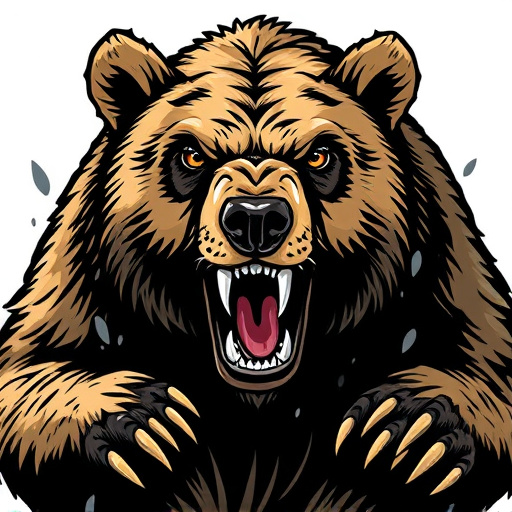Bear spray, an Alaska outdoorsman's essential tool, uses capsaicin from chili peppers to create a 20-foot irritant cloud that deters bears. Its effectiveness is influenced by wind speed, terrain, humidity, and temperature, impacting the bear spray cloud dispersal range. Proper usage involves aiming at the bear's face and eyes from 20-30 feet away, while regular replacement ensures optimal performance.
In Alaska, encountering bears is a potential risk, making understanding bear repellent technology crucial. This article explores the maximum range of bear spray cloud dispersal, a vital tool for outdoor enthusiasts and residents alike. We’ll delve into how this powerful defense mechanism works, factoring in environmental conditions that impact its reach. By understanding these key elements, you can maximize your safety when navigating Alaska’s wild spaces.
- Understanding Bear Spray Technology and its Mechanics
- Factors Influencing Bear Spray Cloud Dispersal Range
- Maximizing Your Safety: Tips for Optimal Bear Spray Use in Alaska
Understanding Bear Spray Technology and its Mechanics
Bear spray, also known as bear repellent, is a crucial tool for outdoor enthusiasts navigating Alaska’s wild landscapes. Understanding the technology behind this potent defense mechanism is essential to utilizing it effectively. When deployed, bear spray creates a cloud of irritants that quickly fills the air, reaching potentially dangerous distances. This strategic dispersal range ensures protection not just at close range but also from a safe distance, giving users valuable time to retreat or deter an approaching bear.
The mechanics of bear spray involve a combination of chemical compounds designed to provoke a strong reaction in bears. Typically, canisters emit a fine mist or aerosol that contains capsaicin, the active ingredient found in chili peppers. This irritant stimulates the bear’s eyes, nose, and throat, causing them to back away rapidly. The cloud dispersal range varies based on factors like wind conditions, terrain, and canister size, but it’s well-documented that bear spray can be effective up to 20 feet (or more) in ideal circumstances, making it a game-changer for personal safety in bear country.
Factors Influencing Bear Spray Cloud Dispersal Range
Several factors determine the range at which bear spray can be effective, known as the bear spray cloud dispersal range. One key factor is the wind. A calm day allows for better retention of the spray’s cloud, enabling it to cover a greater area and stay aloft longer. Conversely, strong winds can disperse the spray rapidly, reducing its effectiveness and range.
Another significant variable is the terrain. In open areas with little or no obstructions like trees or rocks, the spray cloud can travel farther. On the other hand, in dense forests or rugged landscapes, the spray may be halted or deflected by natural barriers, decreasing its reach. Humidity levels and temperature also play roles; warmer temperatures generally enhance evaporation rates, potentially reducing the spray’s persistence and range.
Maximizing Your Safety: Tips for Optimal Bear Spray Use in Alaska
Maximizing your safety while outdoors in Alaska, especially in bear country, is paramount. When it comes to deterring bears, bear spray is a widely recommended and effective tool. Understanding the bear spray cloud dispersal range is crucial for optimal use. Aiming directly at the bear’s face and eyes from a distance of 20-30 feet (6-9 meters) typically creates an effective barrier. This range ensures that the spray cloud reaches the bear while giving you enough space to retreat safely.
Remember, proper usage involves spraying in the direction of the bear, creating a dense cloud of spray that fills the immediate air space. This disrupts the bear’s sense of smell and vision, temporarily deterring it from approaching. It’s important to follow the instructions on the product label for optimal performance and safety. Regularly checking and replacing your bear spray is essential, as expiration dates can vary, ensuring you’re always prepared when encountering Alaska’s wildlife.
When it comes to protecting yourself in bear country, understanding the guard Alaska bear repellent maximum range is key. By grasping the technology behind bear spray and the factors influencing its dispersal range, you can ensure optimal safety during your outdoor adventures. Remember, effective use of bear spray, when combined with other prevention measures, significantly reduces the risk of bear encounters and attacks. So, whether you’re hiking, camping, or exploring Alaska’s wilderness, knowing how far your bear repellent goes can make all the difference in keeping you safe.
